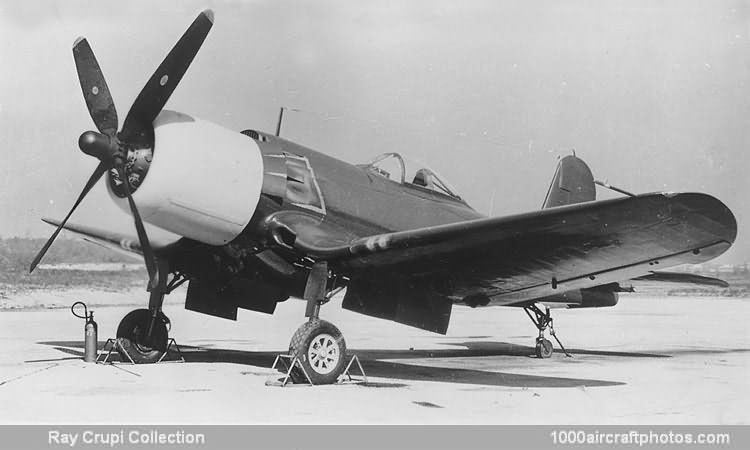Eight standard FG-1 airframes (BuNos. 12992, 13471,13472, 14691 to 14695) were modified as XF2G-1s, the first of these flying in May 1944, prior to which, in March 1944, Goodyear had been awarded contracts for 418 F2G-1s and ten F2G-2s, the former being land-based and the latter being equipped with folding wings and an arrester hook, to operate from carriers. The fuselage of the
F2G-1 was extensively redesigned to make full use of the 50% increase in take off power offered by the new engine, and an all-round vision bubble-type cockpit canopy was adopted, this canopy being somewhat different in contour to that tested earlier on two FG-1As as a proposed production modification to the original Goodyear-built version of the Corsair.
It was proposed to install a water injection system to boost the engine's emergency rating to 3,650 hp, and with the aid of this system a maximum speed of 450 mph (724 kmh) was anticipated at 16,500 ft (4,877 m). Alternative wing-mounted armaments comprised four or six 0.5 in (12.7 mm) machine guns, and eight 5 in (12.7 cm) rocket projectiles or two 1,000 lb (454 kg) or 1,600 lb (726 kg) bombs could be carried. Internal fuel capacity was increased substantially to 309 gal (1,170 l), and this could be augmented by two 150 gal (568 l) drop tanks.
However, the F2Gs dsplayed poor lateral control and insufficientspeed increase over that of the F4U-4 to warrant continuation of development and the production contract was terminated in May 1945 after five F2G-1s, BuNos. 88454 to 88458, and five F2G-2s, BuNos. 88459 to 88463, had been completed."
